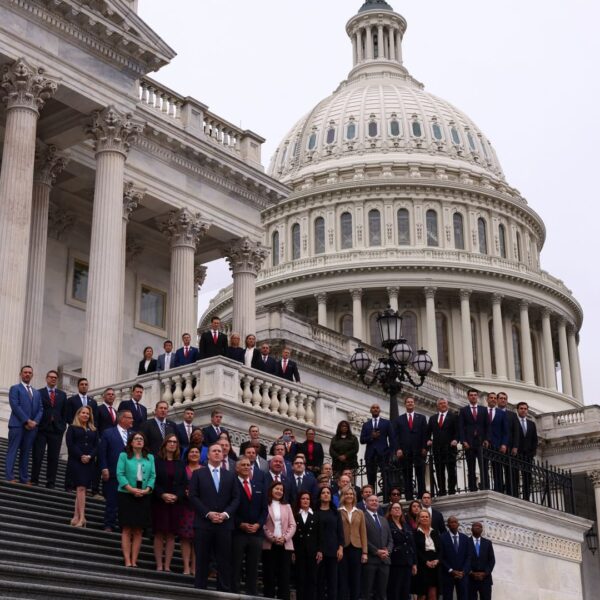
As of December 20, 2024, the United States has escalated its military presence in Syria, doubling its troop count from approximately 900 to 2,000 soldiers.
This surge aims to counter the resurgence of ISIS following the recent collapse of President Bashar al-Assad’s regime. The U.S. has also conducted extensive airstrikes on ISIS targets to dismantle and weaken the group’s operational capabilities.
The ongoing instability in Syria has created conditions favorable for ISIS to reestablish itself both locally and regionally.
With the Assad regime’s fall and heightened tensions between Kurdish and Arab factions, ISIS is exploiting vulnerabilities, particularly in prisons and detention camps guarded by the Kurdish-led Syrian Democratic Forces (SDF).
The group has a history of orchestrating prison breaks, a tactic that poses a significant threat in the current environment.
In 2024, ISIS attacks in Syria have surged to nearly 700 incidents, marked by greater sophistication and lethality.
Leveraging its substantial financial resources, the group continues to rebuild, recruit, and expand its operations.
The fragmented state of Syria—riven by tribal, sectarian, and socio-economic divisions—further amplifies these risks, underscoring the necessity of sustained international efforts to maintain regional security and prevent ISIS from regaining strength.
The Pentagon recently disclosed that the doubling of U.S. troop levels in Syria predates the fall of Bashar al-Assad’s regime, highlighting a sustained commitment to countering ISIS and preventing its resurgence in the region.
While most of the deployed troops are Army personnel focused on disrupting ISIS operations, details regarding the timeline and specifics of their mission remain unclear.
Reports indicate that the troop increase has been in place for months, raising questions about the transparency of U.S. involvement in Syria.
Pentagon spokesperson Maj. Gen. Pat Ryder emphasized that the additional forces are not related to recent events, such as the search for missing journalist Austin Tice, but instead reflect long-term counterterrorism objectives.
On December 8, 2024, U.S. Central Command (CENTCOM) conducted precision airstrikes targeting over 75 known ISIS camps and operatives in central Syria.
Utilizing B-52 bombers, F-15 fighter jets, and A-10 aircraft, these operations aimed to disrupt and degrade ISIS’s operational capabilities, preventing the group from regrouping amid Syria’s ongoing instability.
No civilian casualties were reported during the strikes, which underscore the U.S. commitment to counterterrorism in the region.
Following these efforts, General Michael Erik Kurilla, commander of CENTCOM, visited Syria and Iraq to assess ongoing operations against ISIS, marking the first visit of a senior U.S. military official since the fall of Bashar al-Assad’s regime.
In Syria, he met with leaders of the Syrian Democratic Forces (SDF) and U.S. troops to discuss strategies for force protection and preventing ISIS from exploiting the region’s volatility.
In Iraq, Kurilla held discussions with Prime Minister Mohammed Shia al-Sudani and other officials in Baghdad to strengthen cooperation between Iraq and the international coalition in combating terrorism and ensuring regional security.
The U.S. Department of Defense reaffirmed its commitment to defeating ISIS in Syria, with Deputy Pentagon Press Secretary Sabrina Singh emphasizing CENTCOM’s focus on preventing the group’s resurgence.
Precision airstrikes and sustained collaboration with local partners, including the Kurdish-led SDF, highlight the ongoing efforts to counter ISIS and deny it safe havens.
Defense Secretary Lloyd J. Austin III has engaged with Turkish Defense Minister Yasar Guler to address regional developments, emphasizing the need to protect civilians, prevent escalation, and maintain coordination to ensure the success of the counter-ISIS mission.
Meanwhile, ISIS is actively working to rebuild its governance capabilities, even attempting to poach hardliners from rival factions like Hayat Tahrir al-Sham (HTS).
A report by the Soufan Center highlights the need for sustained U.S. counterterrorism efforts, including targeted operations and airstrikes against ISIS leaders, to mitigate the group’s global threat.
However, President-elect Trump’s consideration of a U.S. troop withdrawal could embolden ISIS and complicate efforts to counter its resurgence.
Ongoing vigilance remains essential to disrupting ISIS’s attempts to exploit the chaos in Syria to rebuild its external operational capacities.
Minority groups in Syria, including Kurds, Christians, Alawites, Druze, and Yazidis, remain at significant risk of targeted violence and massacres.
While Hayat Tahrir al-Sham (HTS) claims it will create a more inclusive government, its origins in Islamic jihadist movements undermine its credibility, and most minorities and international observers view these promises with deep skepticism.
In contrast, the Syrian National Army (SNA), another major anti-Assad faction, has made no such pledges.
Some SNA factions, composed of individuals with ties to extremist groups like al-Qaeda and ISIS, have been implicated in attacks on Kurds and other minorities.
Meanwhile, ISIS sees the fall of Assad as a critical opportunity to stage a resurgence.
The reestablishment of an ISIS caliphate would likely lead to widespread atrocities against ethnic and religious minorities while posing a significant threat to regional stability by potentially expanding its influence into neighboring countries.















